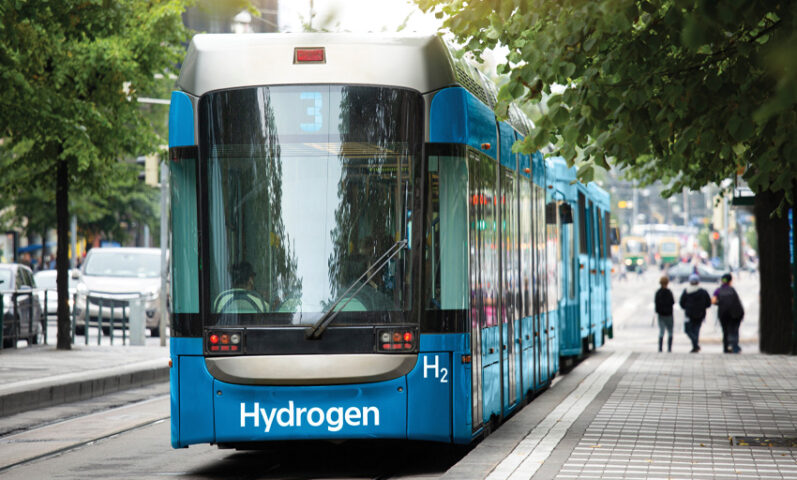
Crucial decade ahead for the future of rail
2nd November 2023
A critical gateway to net zero
29th January 2024Green hydrogen: A secondary long-term rail fuel option

The National Hydrogen Strategy, published in July 2023, outlines how hydrogen can be used for the rail sector in areas where electrification – the primary mean seen as key to decarbonisation – is not feasible.
The National Hydrogen Strategy outlines an end-goal use for green hydrogen in the rail sector which can be rolled out between 2025 and 2030. The goal is for hydrogen gas to be used to power trains in scenarios where electrification is not a feasible option, or as a backup fuel option when electricity is not being produced and stored in high enough quantities.
The backup technologies that can be enabled by the use of hydrogen in the rail sector are battery electricity, bio-CNG, biofuels, and the idea of a modal shift to ensure higher levels of active travel among the Irish population.
Hydrogen is typically bonded to other elements, particularly water (H2O), and hydrocarbons such as methane (CH4). Production of hydrogen relies upon the chemical bonds between molecules such as water to be broken. Currently, most of the world’s hydrogen is ‘grey’ hydrogen, hydrogen produced by the splitting of methane molecules. Since this leaves carbon as a byproduct, this is not a sustainable practice.
The hydrogen the Government refers to in the National Hydrogen Strategy is ‘green’ hydrogen, which involves the splitting of water molecules via a process called electrolysis, leaving oxygen as the byproduct. Climate Action Plan 2023 is earmarking 2GW of the energy produced from offshore wind to be used to enable the production of green hydrogen by 2030, with a wider vision of the renewable gas being produced and, in the long term, exported when there is enough produced to ensure a supply within Ireland.
With electric-power trains seen as the primary means to decarbonise the commuter rail sector, plans are underway under the DART+ programme to this effect. However, the National Hydrogen Strategy states that electrification of the rail corridors are “likely to prove more cost effective, especially over the distances covered by the Irish rail network”.
Therefore, hydrogen-powered trains could potentially offer a solution along routes where full electrification of the rail corridor is not possible, or where the timelines to deliver the infrastructure to electrify the rail corridor necessitate alternative solutions such as hydrogen-propelled trains as an interim solution. Another area where hydrogen powered trains could be considered is as backup to electrified rail, providing resilience to the rail route should an overhead electrical fault occur on a route.
Speaking in September 2023, Minister for Transport Eamon Ryan TD said that whilst green hydrogen can play a “vital role” in decarbonising Ireland’s transport sector, the State remains “a while off” from being able to produce the mass quantities of green hydrogen required to have a meaningful contribution to this decarbonisation.
